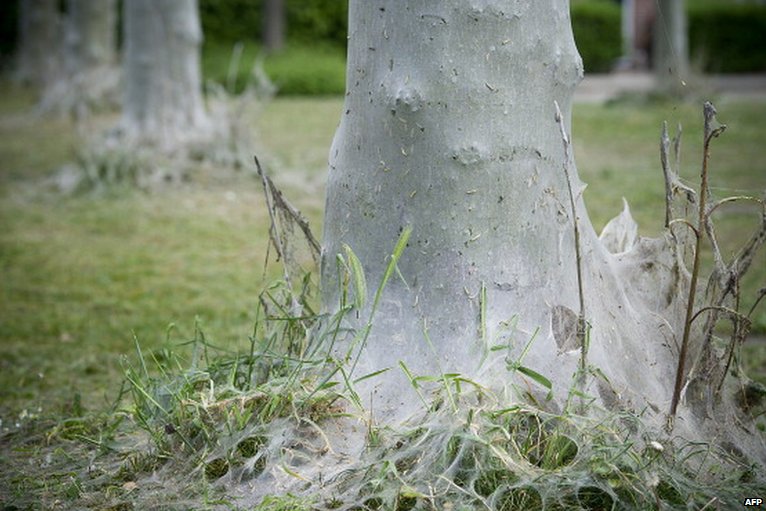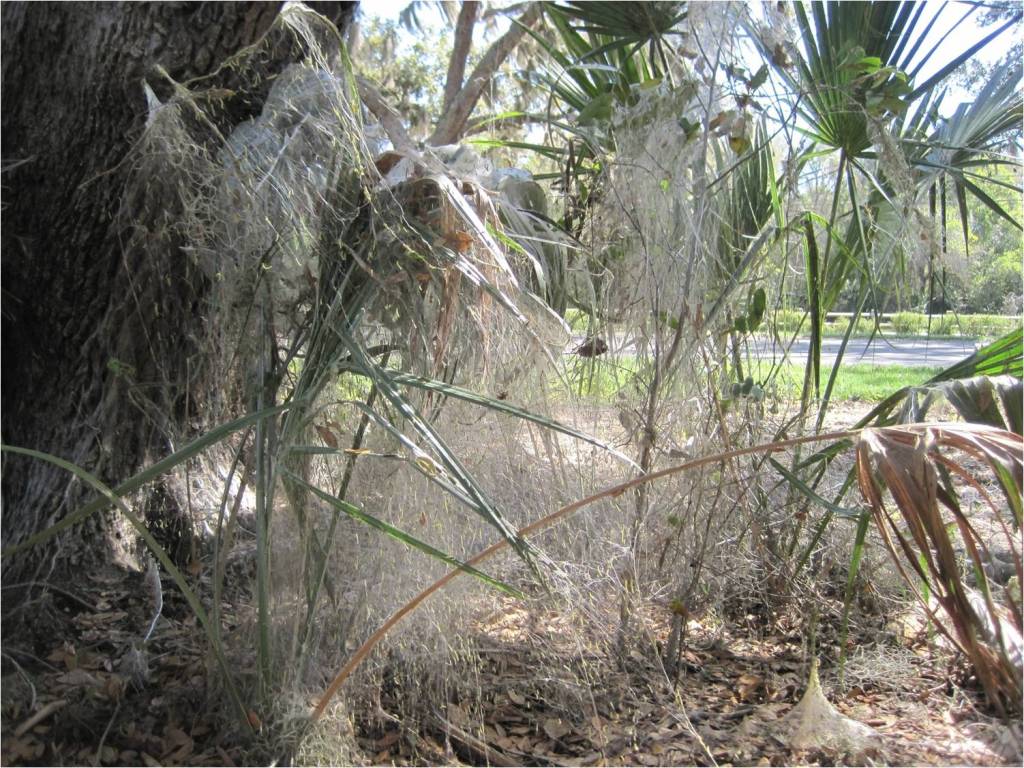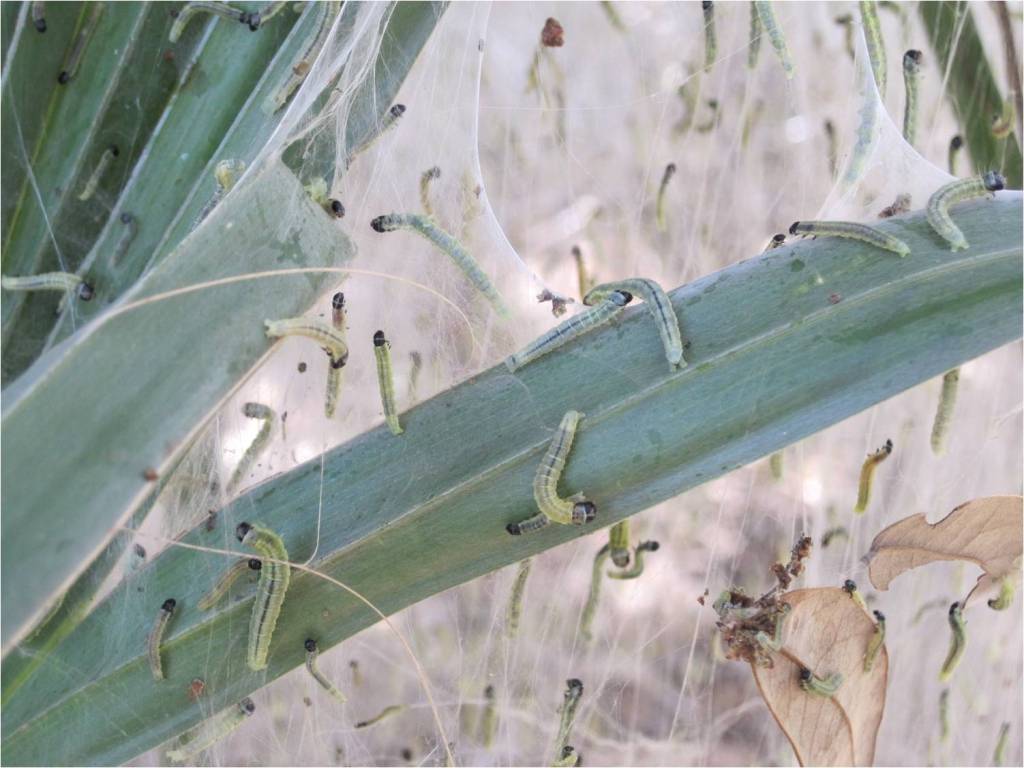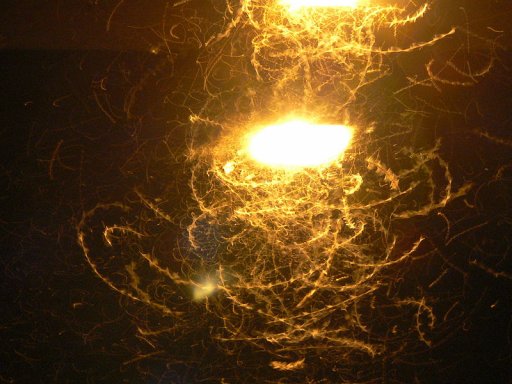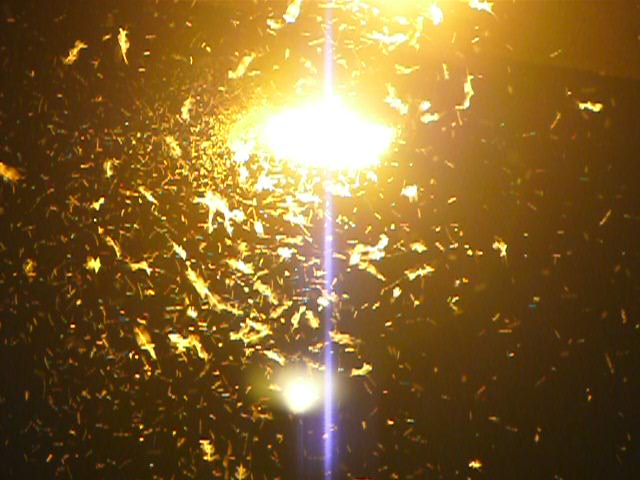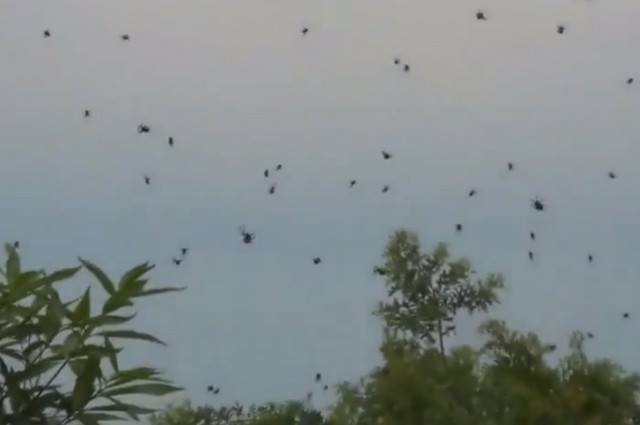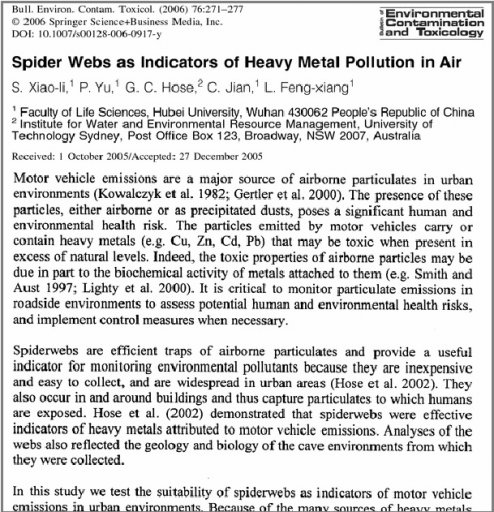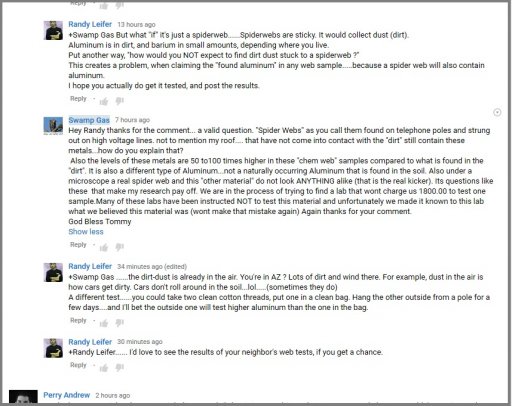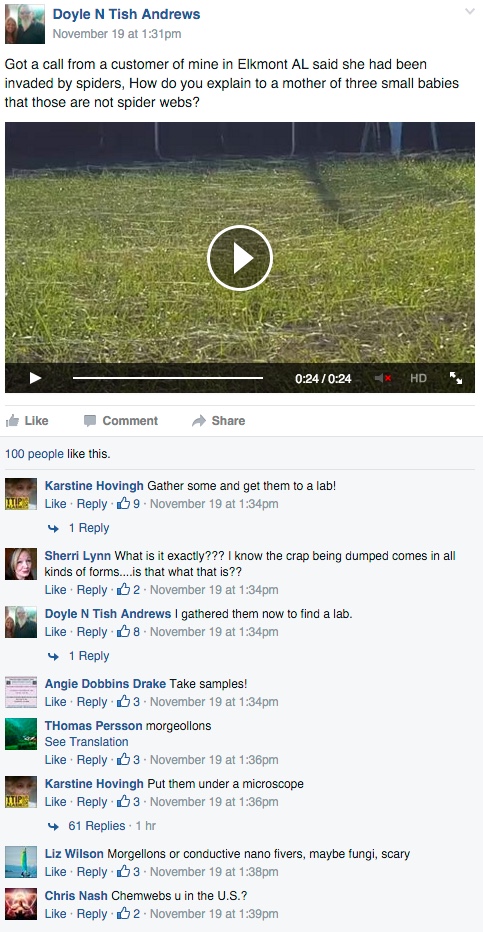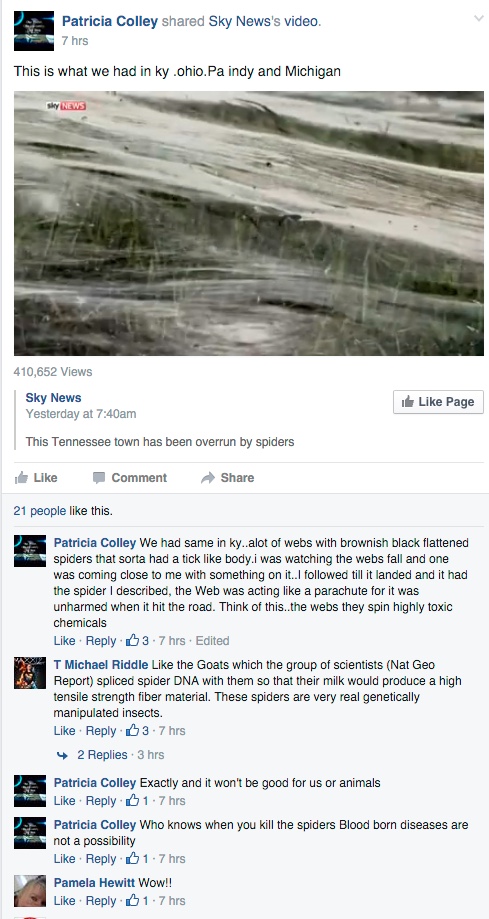There are several videos online, as well as some first hand accounts, that describe a strange white fibrous substance falling out of the sky. Those of a conspiratorial bent will often ascribe this to fallout from deliberate high level spraying - which they call "chemtrails" (thinking that the contrails behind planes are actually being deliberately sprayed). Sometimes, they say it's to do with "Morgellons Disease", a condition coined to describe a long list of symptoms, the most notable being finding fibers on your skin.
Examples of claimed "chem-webs"
These "chemwebs" have a very simple explanation - they are spider silk that is used by spiders to fly though the air. This is something that has been observed for centuries. Here's what it looks like for a single spider:
Of course a single spider is not going to make much noticeable . But there are approximately one million of spiders per acre^, (nearly a billion spiders in a square mile) and occasionally a large number of spiders will take to the air ar the same time (probably due to hatching at the same time based on weather conditions). The masses of silk will coat fields, get caught in trees, and sometimes get tangled up and blown into the air.
Here's an example of what this looks like, probably the result of thousands of tiny spiders.
http://museumvictoria.com.au/discoverycentre/discovery-centre-news/2011-archive/spider-ballooning/ (http://archive.today/O3ik0)
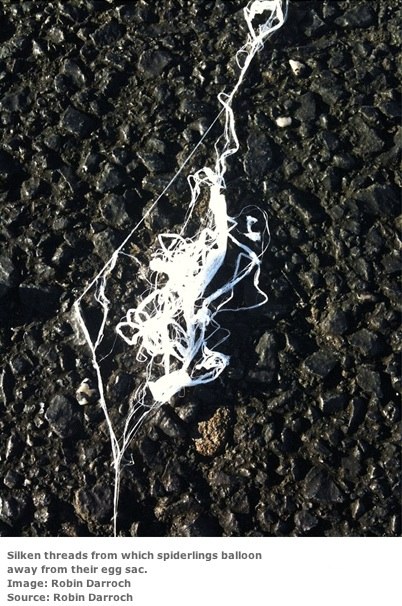
https://www4.uwm.edu/fieldstation/naturalhistory/bugoftheweek/spider_flight.cfm

https://littlesundog.wordpress.com/2013/10/19/my-first-gossamer-season/

This has always happened, and it's always been confusing people. It was only relatively recently (the 1700s) that people realized the "gossamer" that sometimes coats fields actually came from spider, and was thought to come from evaporated dew. Folk tales and superstitions persist, and now it seems a new folk tale is born, with "chem-webs".
Some great first hand accounts of spider ballooning, and the resultant fibrous fallout, is found in the 1890 book American Spiders and their Spinning Work,^ by Henry Christopher Mc Cook, Chapter 9, pages 256-282
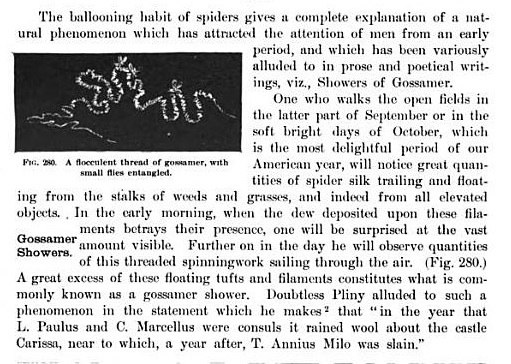
And the book quotes an even older source, from 1741:
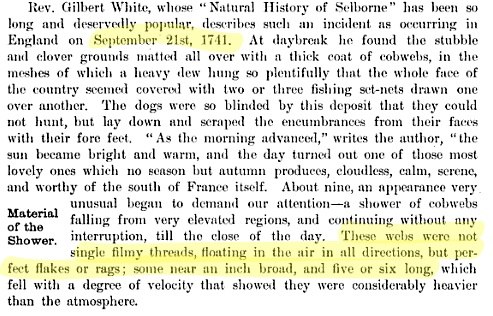
Which seems to match modern observations quite well.
This silk is not particularly sticky (spiders can spin both sticky and non-sticky silk). But is very light and thin, and when rolled in your fingers it will collapse upon itself, resulting in just a few specks. This can be mis-interpreted as "dissolving", but really it just that the silk occupies very little space to start out with. The silk used for flying is known as "gossamer" silk, and is one the lightest and thinnest of all types of spider silk. The thinness of the silk maximizes the surface area to weight ratio, and so creates more lift from the wind.
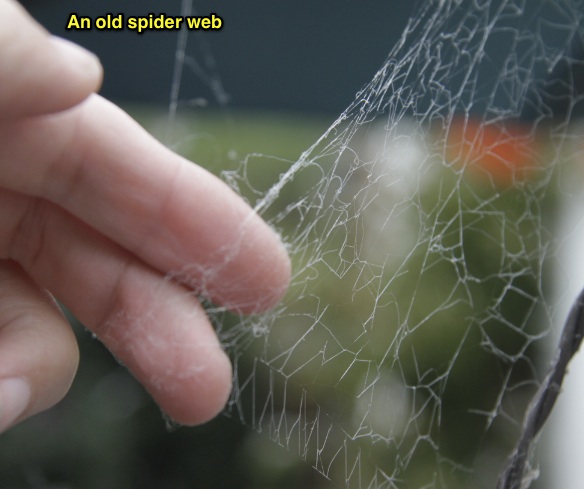
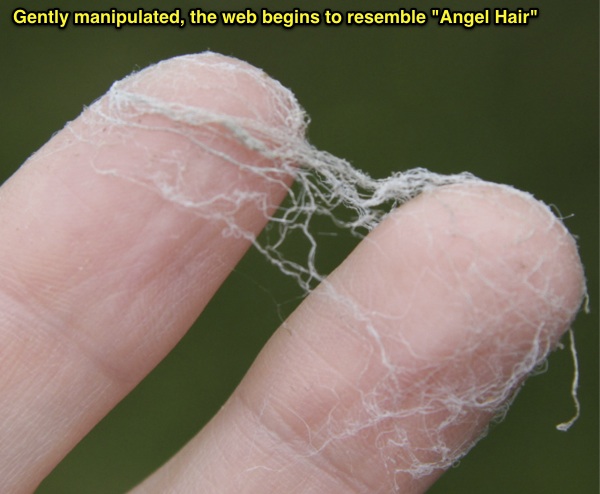
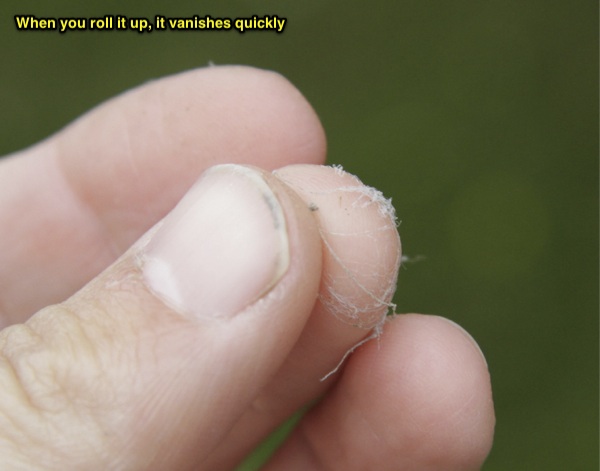
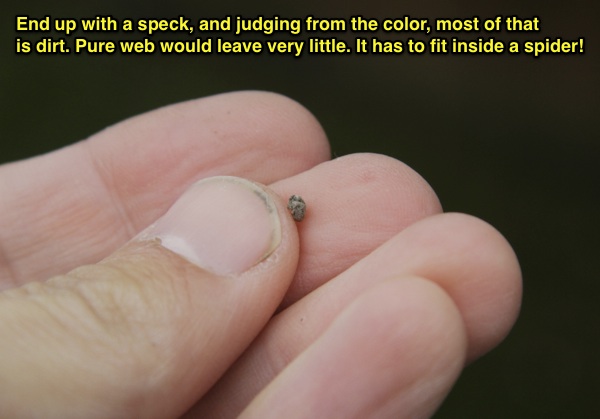
Great example of the webs in the air:
Source: https://www.youtube.com/watch?v=iOtw8oMLf8A
Examples of claimed "chem-webs"
These "chemwebs" have a very simple explanation - they are spider silk that is used by spiders to fly though the air. This is something that has been observed for centuries. Here's what it looks like for a single spider:
Of course a single spider is not going to make much noticeable . But there are approximately one million of spiders per acre^, (nearly a billion spiders in a square mile) and occasionally a large number of spiders will take to the air ar the same time (probably due to hatching at the same time based on weather conditions). The masses of silk will coat fields, get caught in trees, and sometimes get tangled up and blown into the air.
Here's an example of what this looks like, probably the result of thousands of tiny spiders.
http://museumvictoria.com.au/discoverycentre/discovery-centre-news/2011-archive/spider-ballooning/ (http://archive.today/O3ik0)

https://www4.uwm.edu/fieldstation/naturalhistory/bugoftheweek/spider_flight.cfm
https://littlesundog.wordpress.com/2013/10/19/my-first-gossamer-season/
This has always happened, and it's always been confusing people. It was only relatively recently (the 1700s) that people realized the "gossamer" that sometimes coats fields actually came from spider, and was thought to come from evaporated dew. Folk tales and superstitions persist, and now it seems a new folk tale is born, with "chem-webs".
Some great first hand accounts of spider ballooning, and the resultant fibrous fallout, is found in the 1890 book American Spiders and their Spinning Work,^ by Henry Christopher Mc Cook, Chapter 9, pages 256-282

And the book quotes an even older source, from 1741:

Which seems to match modern observations quite well.
This silk is not particularly sticky (spiders can spin both sticky and non-sticky silk). But is very light and thin, and when rolled in your fingers it will collapse upon itself, resulting in just a few specks. This can be mis-interpreted as "dissolving", but really it just that the silk occupies very little space to start out with. The silk used for flying is known as "gossamer" silk, and is one the lightest and thinnest of all types of spider silk. The thinness of the silk maximizes the surface area to weight ratio, and so creates more lift from the wind.




Great example of the webs in the air:
Source: https://www.youtube.com/watch?v=iOtw8oMLf8A
Last edited:

